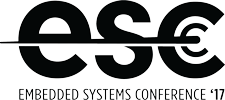Five Ways to Rethink Enclosures for the IoT
Even in IoT applications, the enclosure continues to be a plant floor workhorse. Here are five ways to make sure your enclosures work for the IoT.
September 21, 2017

The industrial Internet of Things (IoT) impacts the ability of companies to manage data and function efficiently. With more than 300 end-to-end IoT solutions in the marketplace, it can be overwhelming for industrial engineers trying to understand IT implementation and workflows.
With all of the challenges that the IoT brings, it is important to consider that the workhorse of infrastructure remains the enclosure. Whether production equipment and controls are communicating locally or pushing data to the cloud, the enclosure is crucial to success.
Specifying additional enclosures and networking equipment without first taking stock of your existing infrastructure can impact program efficiency and opportunities to scale your operations.
|
Modular enclosures are scalable and versatile, allowing for cost-efficient expansion as a system grows. (Source: Rittal Corp.) |
In order for your operations to deliver on the promise of the IoT, the entire process, right down to existing enclosures, must be reexamined to assure they will continue to be useful and effective.
Here are five ways to evaluate your current enclosures for the world of the IoT.
1. Safety and Security
Enclosures may be placed in more vulnerable positions to accommodate the sensors and networking needed to make the IoT practical.
Assess both physical and cyber security for the enclosures.
Upgrade firmware regularly on all connected mechanisms.
Change passwords frequently.
Choose secure lock systems.
2. Protection
As enclosures move beyond the plant floor, exposure to potentially harmful ambient conditions becomes a concern.
Choose appropriate NEMA and UL ratings for each environment.
Assess ingress protection from such ambient contaminants as oil, dirt, salt air or product dust.
Avoid electromagnetic “noise” from motors, belts, and fans.
Choose the appropriate level of NEMA and UL protection for wall-mount and junction boxes.
3. Layout of operational controls
The IoT requires more equipment within the same enclosure so space efficiency and design become primary concerns for engineers.
Assess power management for increased density.
Audit cooling capacity to ensure additional devices do not impact thermal management.
Determine if panel modification is necessary to allow for additional cable management, via raceways, cabling trays, routing, clamping or busbars to reduce space requirements.
4. Scalability
Enclosure modularity can improve scalability and savings during expansion.
Assembly of additional enclosures should be easy to handle on-site.
Enclosures could be bayed side-to-side to accommodate custom configurations.
Doors should be reversible.
Interior racks need to be repositionable to house new equipment configurations.
5. Future-proof design
Assessing future needs during the design stage can enable operation infrastructure to handle future needs of the IoT.
Plan for tomorrow, not “just enough” for today.
Consider busbars instead of cabling for more power in less space.
Choose enclosures that are flexible for modification.
Assess designs to add modifications such as new knockouts, cable entry points, windows or HMI.
A comprehensive assessment of current and future IoT infrastructure can save long-term headaches and ensure success. For instance, the enclosure can play a vital role in the security of interconnected IoT devices. While there are concerns about software intrusion among IoT devices, there is a real threat in the physical hijacking of components, which can be addressed by enclosure lock and security systems.
As legacy systems are upgraded or replaced to accommodate IoT migration, modular enclosure systems offer the ability to load more equipment into current cabinets or bay them together to house additional network controls.
In addition, the ecosystem of cloud providers, mobile network companies and microprocessor companies can be overwhelming for many industrial managers trying to understand the integration of the IoT. Working with infrastructure manufacturers that have global relationships with industrial, IT and IoT companies can provide insight and direction to finding the right solutions providers for your company’s needs.
The evolution of your organization to the IoT can be winding and full of challenges, but leaning on your solutions providers, future-proofing your infrastructure and setting clear goals for adoption can lead you to success.
Steve Sullivan is the Training Supervisor at Rittal Corporation where he oversees instructor-led, computer and web-based learning and development.
|
About the Author(s)
You May Also Like





